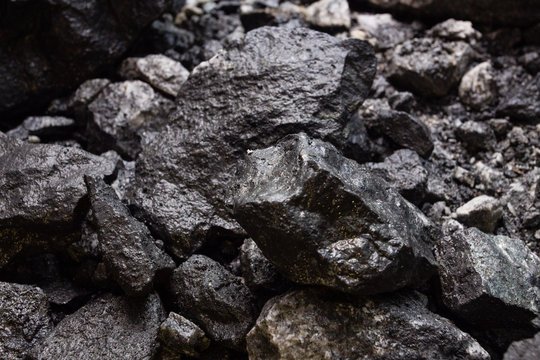Pig iron is the medium product of smelting iron ore with a high-carbon fuel such as coke, usually with limestone as a flux. Charcoal and anthracite have also been used as fuel. Pig iron has a very high carbon content, typically 3.5 & 4.5%, which makes it very breakable and not useful directly as a material excluding for limited applications.
Dealer pig iron contains three main types: BASIC PIG IRON, used mainly in electric arc steelmaking, HAEMATITE PIG IRON [also known as FOUNDRY PIG IRON], used in especially in the manufacture of grey iron castings in cupola furnaces, and NODULAR PIG IRON, used in the manufacture of ductile [also known as nodular or spheroidal graphite – SG] iron castings. Pig iron contains at least 92% Fe. Other constituents are typically:
BASIC PIG IRON 3.5-4.5% carbon, <1.5% silicon, 0.5-1.0% manganese, <0.05% sulphur, <0.12% phosphorus
HAEMATITE PIG IRON 3.5-4.5% carbon, 1.5-3.5% silicon, 0.5-1.0% manganese, <0.05% sulphur, <0.12% phosphorus
NODULAR PIG IRON 3.5-4.5% carbon, <0.05% manganese, <0.05% sulphur, <0.05% phosphorus
Foundry pig iron is cast in 28 grades into 20 kg pigs. In a haphazard heap, pig iron settles approximately 50% of the apparent volume
Hazard : No specific risk This cargo is non-combustible or has a lower fire risk
Ventilation : No special requirement Stowage & segregation: No special requirement Hold cleanliness : Clean and Dry as relevant to the dangers of the cargo.
Precautions : Use the wooden mat or plywood on the top of the tank top to avoid any damage/ check vessel strength and stresses.
Carriage : No special requirement
Discharge : No special requirement
Clean up : Prior to washing out the remains of the cargo, the bilge wells of the cargo spaces shall be washed.
Loading: This cargo usually loading using tubs. In such case, tubs are usually decreased by a crane in the hold and the contents are dribbled out. When this cargo is loaded using tubs. The first few tubs shall be dropped onto the tank op to avoid crack.
Trim in accordance with the appropriate provisions required under sections 4 and 5 of the code, the tank top may be overstressed unless the cargo is evenly spread across the tank top to balance the weight distribution. Due to consideration shall be paid to ensure that the tank top is not overstressed during the voyage and during loading by a pile of the cargo.
Methods of grade separation (within one hold) are
- Stow different grades at opposite ends of the hold.
- Different grades using steel products or boosters or pig tubs(preferably).
- Use chicken wire(double run) and plastic over the over-stowage grade if over-stow is inescapable.
- Never stow an F grade and an SP grade in the exact hatch in bulk.
Pig iron Loading Port – Rio de Janeiro / Brazil
Discharging port – New Orlean /Missisipi river/USA
Shippers Requirements
The IMO modifications to the entry for direct reduced iron pellets, lumps, and cold moulded briquettes relate specifically to the Shippers Requirements which now read as follows:
A. Shipper should provide required specific instructions for carriage, either:
1 ) Maintenance throughout the voyage of cargo holds under an inert atmosphere having less than 5% oxygen. The hydrogen content of the atmosphere should be maintained at less than 1% by volume; or
2 ) That the DRI has been manufactured or treated with an oxidation and corrosion inhibiting method which has been proved to the happiness of the Competent Authority, to provide effective protection against harmful reactions with sea water or air under shipping conditions.
B. The provisions of paragraph A may be waived or varied if approved by the Competent Authorities of the countries concerned taking into account the sheltered nature, length, duration, or any other suitable conditions of any specific voyage. (Source: Britannia circular 1982)




Leave A Comment